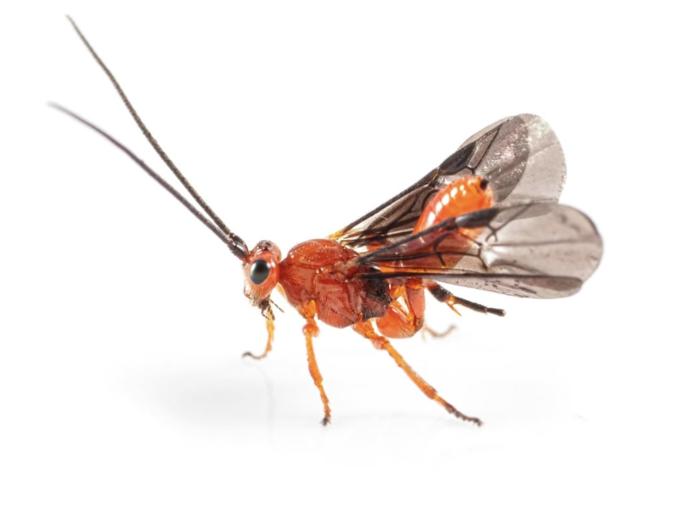When you think of Braconid wasps, you probably picture tiny insects that play a crucial role as parasitoids in nature. These wasps often target other insects, laying their eggs inside their hosts. But what animals eat Braconid wasps? Surprisingly, there are quite a few predators in the wild that hunt these beneficial insects. In this article, we'll explore which animals feed on Braconid wasps and discuss their role in the food chain.

So, who exactly eats Braconid wasps? As small and agile as these insects are, they aren’t immune to predation. A variety of insectivores, including certain birds, mammals, and insect predators, will feast on Braconid wasps when the opportunity arises.
Several species of insectivorous birds are known to hunt Braconid wasps. Birds like swallows, warblers, and cuckoos are excellent at snatching up flying insects, and they often include Braconid wasps in their diet. These birds help control the populations of not only wasps but also other small insects. The fast reflexes of these birds make them great at catching flying wasp-eating animals in mid-air.
Though not as common as birds, some mammals that eat wasps also consume Braconid wasps. Certain insectivorous mammals, such as shrews and moles, have been known to hunt insects, including wasps, that live in the soil or near ground cover. These animals are great at digging up nests and feeding on the larvae or adults of various wasp species, including Braconids.
It’s not just birds and mammals that hunt Braconid wasps—spiders also play a role in predation. Many spiders, particularly web-building spiders like the orb-weaver, catch wasps in their webs. While Braconid wasps aren’t the primary prey for these spiders, they certainly aren't off the menu. Wasp-hunting spiders wait patiently for insects to become trapped in their webs, including Braconid wasps that may fly into the trap.
Ants are another surprising predator of Braconid wasps. While ants are known for scavenging and attacking weakened insects, they can also be aggressive hunters. Some ant species will invade the nests of Braconid wasps, especially when the wasps are in the larval or pupal stages. These ants are opportunistic and will feed on any wasp-eating animals they can overpower.
Here’s a table summarizing the key points related to what animals eat Braconid wasps:
| Predator | Type | Description | How They Eat Braconid Wasps |
|---|---|---|---|
| Insectivorous Birds | Birds (e.g., Swallows, Warblers, Cuckoos) | These birds hunt a variety of flying insects, including Braconid wasps. | Catch Braconid wasps in flight and eat them directly. |
| Insectivorous Mammals | Mammals (e.g., Shrews, Moles) | Small mammals that dig and hunt for insects in the soil, including wasps. | Dig up nests or hunt larvae and adults in the ground. |
| Spiders | Arachnids (e.g., Orb-Weaver Spiders) | Certain spiders build webs to capture flying insects like wasps. | Trap Braconid wasps in their webs and consume them. |
| Ants | Insects | Some species of ants invade the nests of Braconid wasps, especially during the larvae stage. | Attack and eat Braconid wasp larvae or weakened wasps in their nests. |
| Other Insect Predators | Various Insects | Other insects, such as wasp-hunting beetles, also feed on Braconid wasps. | Prey on Braconid wasps in various stages of their life cycle. |
| Birds of Prey | Raptors (e.g., Hawks, Owls) | Some larger birds, like raptors, will feed on insects, including Braconid wasps. | Hunt and capture Braconid wasps while they are flying or resting. |
Insectivorous Birds are effective aerial predators of Braconid wasps.
Mammals like shrews and moles hunt them when they’re in the soil or near the ground.
Spiders rely on their webs to capture flying insects, including Braconid wasps.
Ants sometimes invade wasp nests to eat the larvae or adult wasps.
Other Insect Predators such as beetles also consume Braconid wasps in various stages.
This table provides a clear overview of the animals that eat Braconid wasps and their predation strategies.
Before we dive deeper into the animals that eat Braconid wasps, let’s quickly touch on their ecological role. Braconid wasps are crucial for controlling pest populations. As parasitoid wasps, they lay their eggs inside the bodies of host insects, often harmful ones like caterpillars or aphids. The larvae feed on the host, eventually killing it. This makes Braconid wasps highly beneficial for natural pest control. While they may be eaten by predators, they are also key players in keeping ecosystems in balance.
Despite being a valuable food source for many animals, Braconid wasps have evolved several defense mechanisms. One of the most notable features is their small size, which helps them avoid larger predators. Their agility allows them to escape from insect predators like wasp-hunting spiders or birds. Additionally, some Braconid wasps have developed venom that can deter predators from attacking them. They may also use camouflage to blend into their surroundings and avoid being seen by hungry predators.
The presence of wasp-eating animals highlights the complexity of the food chain. Each predator plays an important role in regulating the populations of the species they consume. Birds, mammals, and even insectivorous spiders help keep populations of Braconid wasps and other insects in check. This keeps ecosystems healthy by ensuring that no single species becomes too dominant.
In conclusion, Braconid wasps are not only fascinating creatures in their own right, but they are also an important part of the food chain. While these parasitoid wasps are beneficial for pest control, they are also prey for many animals. From insectivorous birds to shrews and spiders, Braconid wasps have a variety of predators in the wild. These wasp-eating animals help maintain balance in the ecosystem by controlling insect populations. So, while Braconid wasps may be small and elusive, they are an essential link in nature’s food chain.
animal tags: braconid-wasps
We created this article in conjunction with AI technology, then made sure it was fact-checked and edited by a Animals Top editor.